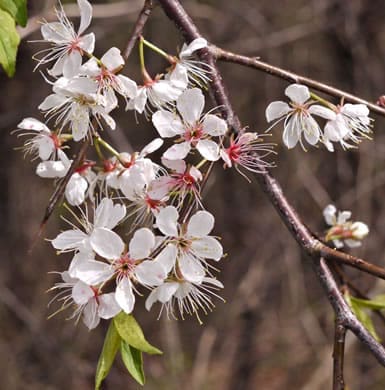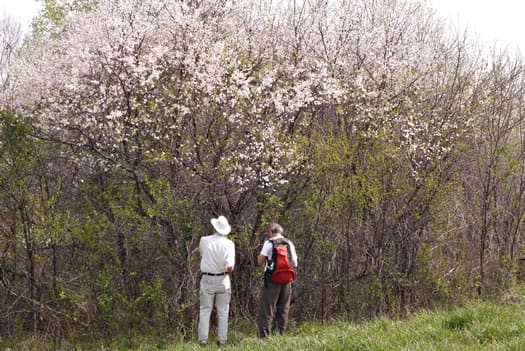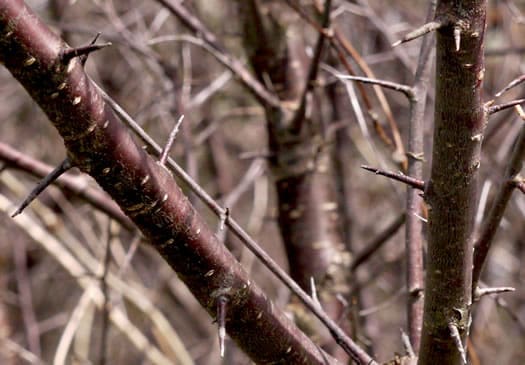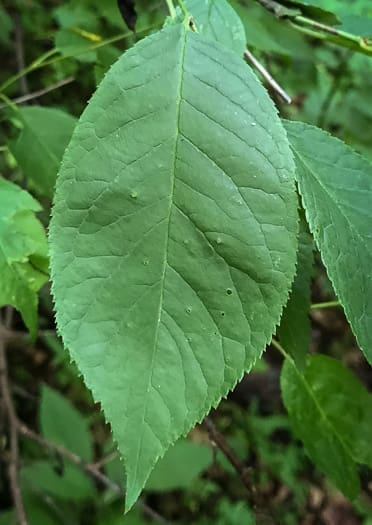Rosaceae
American plum
Prunus americana
Synonyms
Cerasus americana
Prunus domestica var. americana
Other Common Names
wild plum
Plant Type
Small Tree/Large Shrub (10-25 ft)
Life Cycle
Perennial
Typical Size
10-20 ft. tall
15-25 ft. wide
Propagation
By seed, By cutting
Plant Propagation Notes
Use dormant hardwood, softwood, semi-hardwood or root cuttings. Seed requires cold moist stratification.
Plant Planting Notes
Provide up to 25 ft spacing.
Plants/Diseases
Susceptible to black spot, canker, or black knot diseases. Sometimes experiences infestations of aphids, scale, and tent caterpillars.
Wildlife Benefits
Nectar/pollen source for pollinating insects, Host plant for butterfly larvae
Leaves
Leaves alternate, oblong to ovate with serrate margins; 3-6 inches long.
Flowers
White, fragrant flowers with 4-5 petals in an umbel.
Fruit
Drupe
Bark
Smooth reddish to gray bark with horizontal lenticels, becoming rough with age.
Toxicity
The fruit pits have medium toxicity if ingested.
Edibility
Fruits are edible and use to make jams, jellies, and preserves.
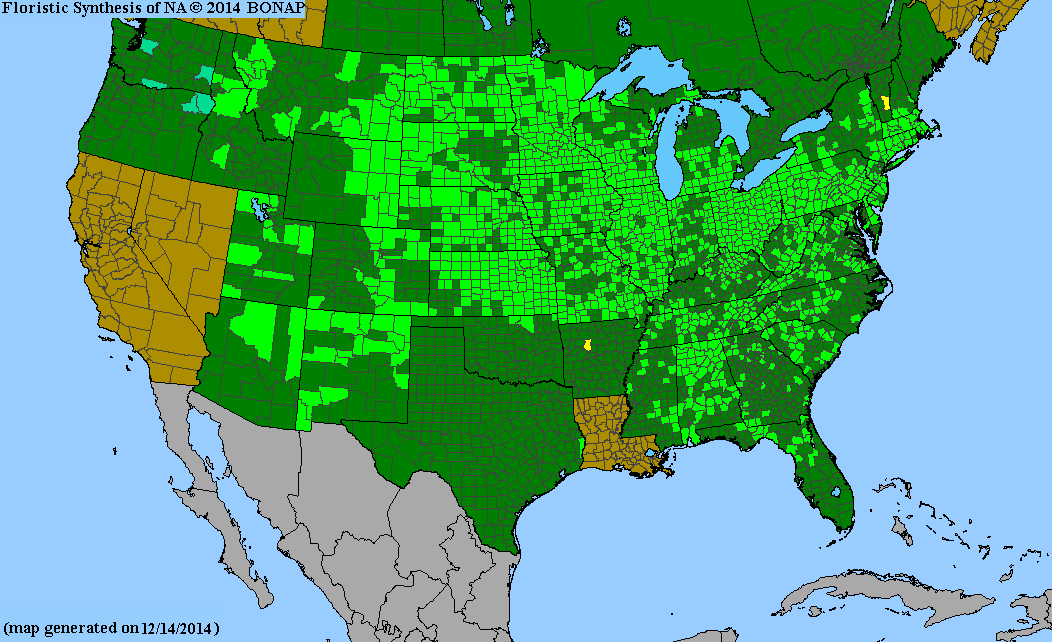
USDA Hardiness Zones
4, 5, 6, 7, 8, 9
Light Exposure
Full Sun, Part Sun/Shade
Soil Moisture
Dry, Medium, Moist
Soil pH
Acidic (less than 6.0), Neutral (6.0-8.0)
Native in South Carolina?
Yes
Plant Native Habitat
Upland and bottomland forests, fencerows.
Global Conservation Status (NatureServe)
Secure (G5)
Federal Conservation Status (USFWS)
Not Listed
Distribution Notes
Rare in the coastal plain, common in the piedmont, sandhills, and mountains.

